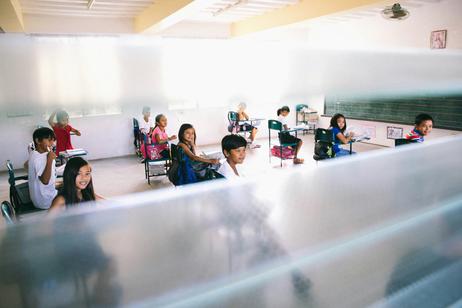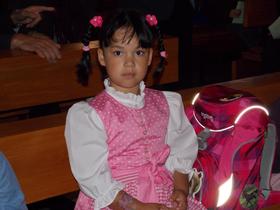How Boarding Schools Are Using Generative AI: Rules, Risks, and Rewards for Boarding Students
In 2025, generative AI is no longer a distant concept in academia—it is a reality being woven into boarding school life. From homework help to creative exploration, generative AI tools offer both tremendous promise and serious challenges. In this article, we examine how boarding schools are adapting: the rules they are putting in place, the risks they face, and the rewards available to students, educators, and institutions.
What We Mean by Generative AI in the Boarding School Context
Generative AI refers to computer systems—including large language models (LLMs), image-generation tools, chatbots, etc.—that create new content (text, images, audio) rather than simply processing or retrieving existing content. Examples include tools like ChatGPT (for text generation), DALL·E or Midjourney (for images), and tools that assist with coding, translation, and summarization.
In boarding schools, generative AI can appear in many contexts:
Academic work: essays, problem sets, lab reports
Creative work: art, music, storytelling
Learning aids: summarization, tutoring, revision
Administrative or support roles: scheduling, feedback generation, mental health chat support
Why Boarding Schools Are Taking Note in 2025
Some key trends and developments:
Policy urgency: A UNESCO survey found that fewer than 10% of schools or universities globally had formal guidance or policies around generative AI as of early 2024. World Economic Forum
State guidance increasing: More than half of U.S. states have issued K-12 guidance on AI use in schools by mid-2025. Stateline
Task forces and expert reports: For example, the Brookings Global Task Force on AI in Education was convened in late 2024 to forecast both risks and rewards, anticipating outcomes in secondary schools and beyond. Brookings
These developments carry over into the boarding school setting, where residential life, extended hours, and more immersive educational environments create both opportunities and unique complexities.
The Rules: How Boarding Schools Are Regulating AI
Boarding schools are designing policies in several key areas to ensure generative AI is used responsibly. Below are common approaches and examples of how rules are being structured.
| Policy Area | Typical Rules / Provisions | Why It Matters in a Boarding School Setting |
|---|---|---|
| Academic Integrity & Cheating | Prohibit AI use on certain assessments (e.g., in-class, proctored exams); require disclosure of AI assistance; define what constitutes misuse. | Boarding students often have more access to devices off-hours; pressure to perform can lead to misuse; consistent enforcement is crucial. |
| Usage Boundaries | What tools are allowed; when AI may be used (homework, creative projects, revision); what is off-limits (full essay generation, etc.). | Clear guidelines reduce ambiguity; helps teachers design assignments that require original thinking. |
| Training & Literacy | Workshops for students, faculty, staff on how to use AI tools, their limitations (bias, mistakes), ethical use. | Helps all members of the community understand both tool and risk; prepares students for future work. |
| Privacy & Data Protection | Guidelines around what data AI tools may collect; use of school-approved tools; vetting providers for data security. | Boarding schools often handle sensitive student data, including residential / pastoral information. |
| Feedback, Assessment & Accountability | Methods for detecting misuse; periodic review of AI policy; appeals or due process; aligning punishments proportionally. | Ensures fairness; students more likely to comply if know exactly what is expected and consequence of misuse. |
Some boarding schools are going further, creatingAI Ethics Committees or task forces with students, teachers, and administrators to oversee policy, review cases, and revise rules as technology evolves.
The Risks: What Boarding Schools Must Guard Against
Generative AI offers potential, but also serious perils. For boarding schools, some risks are intensified due to 24/7 student presence, residential life, high academic expectations, and community values.
Academic Dishonesty & Learning Loss
Students may use AI to produce work they do not understand. Over-reliance can stunt critical thinking, writing, research, and original problem-solving skills.Bias, Inaccuracy, and Hallucination
AI tools can generate content that is factually wrong, misleading, or culturally biased. If students or teachers rely uncritically, this can propagate error or harm.Equity and Access Issues
Not all students may have equal access to devices or AI subscriptions; some may lack the digital literacy to use tools well. Boarding schools often strive for inclusive environments; disparities can undermine that.Privacy & Data Security Concerns
Many AI tools collect data or require cloud connectivity; questions around how student work, identity, or health/residential information is processed and stored are critical. Boarding schools often collect more personal information (pastoral care, health, conduct), increasing stakes.Over-Surveillance and Mental Strain
AI is sometimes used (explicitly or implicitly) to monitor student work, detect cheating, track online behaviour. In a boarding environment, this can feel invasive. Also, students may feel pressure to produce with AI or compete in ways driven by AI-enabled metrics.Policy and Enforcement Challenges
Tools evolve quickly; rules that seem sensible now may be outdated in months. Enforcement across teachers, staff, and residential supervisors can be inconsistent. There may be tension between innovation and regulation.
The Rewards: How Generative AI Can Benefit Boarding Students
When used well, generative AI can bring substantial gains to boarding school students and the broader school community.
Personalized Learning & Remediation
AI can generate practice problems, quizzes, or explanations tailored to each student’s strengths/weaknesses. For boarding students, who may spend more time outside class in study halls, this can boost self-paced learning.Enhanced Creativity & Exploration
Tools that generate imagery, music, or story prompts can expand creative horizons. Boarding schools with strong arts or humanities programs can integrate AI to help students experiment, iterate, and prototype ideas.Improved Feedback Loop
AI tools can help teachers provide faster, more frequent feedback. Peer review assisted by AI, or AI-generated summaries of errors, can allow students to iterate on work more rapidly.Support for Teachers & Administrative Efficiency
By automating repetitive tasks—like grading simple quizzes, summarizing student performance, preparing draft lesson materials—teachers can focus more on mentoring and in-person interaction.Accessibility & Inclusion
For students with learning differences, AI tools (text-to-speech, speech recognition, translation) can enable greater participation. Boarding schools are often intentional about inclusive education; these tools can help.Preparation for Future Skills
As workplaces increasingly use AI tools, boarding students with grounded AI literacy (how and when to use AI, ethical considerations) are better prepared for higher education and careers. Schools that integrate generative AI responsibly give students a head start.
Examples: Boarding Schools Leading by Practice
While full scaled, public reports are still emerging, several boarding schools are already putting AI policy into action in ways worth noting:
A Swiss boarding school that initiated a global AI charter, calling for regulation and awareness of risks, demonstrating leadership beyond its own walls. Forbes
Schools in several U.S. states adapting assignments to reflect generative AI’s presence—not banning entirely, but shifting assessment types, emphasizing process over product. thehudsonindependent.com
Schools revamping exam formats: in some high schools, take-home essays are now being substituted or complemented by in-class writing to ensure authenticity. New York Post
Practical Advice: Balancing Rules, Risks & Rewards
Boarding schools that succeed in using generative AI well tend to follow these practices:
Co-create policies with all stakeholders
Students, teachers, residential life staff, parents—all have perspectives. Inclusion builds clearer norms and buy-in.Keep policies flexible and updated
Technology evolves quickly. Policies should be revisited annually (or even more frequently) to keep pace.Focus on AI literacy
Teach not just how to use AI tools, but how they work, where they err, how to evaluate AI-generated content. Embed this in curricula, ideally across subjects.Design assessments to require original thought
Use in-person tasks, oral exams, portfolios, drafts, reflections, and restrictions on AI use for certain assessments.Ensure privacy, vet vendors
Only use AI providers that adhere to strong security, data privacy standards. Be transparent with students and families about data use.Provide supportive infrastructure
Access to devices, reliable internet, training for teachers, support for students who may struggle with technology.Cultivate values
Emphasize honesty, responsibility, curiosity. Encourage students to see AI as tool, not crutch.
What Parents, Students, and Educators Should Ask
If your boarding school is developing or revising its generative AI policy, here are important questions to consider:
Do students clearly understand when and how they may use AI tools?
Are there consistent consequences for misuse, and is enforcement fair?
How does the school protect student privacy and secure data when using AI tools?
What resources and training are being provided for students and faculty to use AI responsibly?
How are assessments being adapted to ensure originality and student growth?
Is AI usage equitable—do all students have access, and do policies avoid unintentionally disadvantaging some groups?
Looking Ahead: What to Watch
Regulatory Landscape: Look for more national or international guidelines or laws that affect how AI tools can be used in schools.
Exam Reform: As seen in the U.K., conversations are underway about changing GCSEs, A-Levels, and their equivalents to account for generative AI.
AI-powered evaluation tools: Including tools that can detect AI-generated content, but also concerns over false positives or overdependence.
Evolving tool quality: Generative AI is getting better at mimicking human style, reducing errors, but also introducing more subtle risks (misinformation, bias).
Conclusion
Generative AI presents a double-edged sword for boarding schools. Done wrong, it risks undermining academic integrity, fairness, and critical thinking; done well, it can enrich learning, foster creativity, enable personalized support, and prepare students for a future increasingly shaped by AI. For boarding students—who live and learn in immersive environments—this balance is especially critical.
The best-practice approach for boarding schools in 2025 is to adopt clear but flexible rules, emphasize AI literacy, protect privacy, adapt assessment models, and align AI usage with the school’s educational mission. With careful governance, the risks can be managed, and the rewards achieved—not just for students, but for the whole boarding school community.















